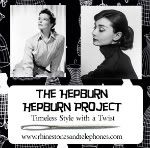
Fashion plate, day dresses, 1864, Victoria and Albert Museum
I have recently finished reading this book: Mauve: how one man invented a color that changed the worldBy Simon Garfield. I am blown away by the fact that I never heard about this story, not in chemistry class, not in textiles class and not from anyone I know who is a dyer.
In 1856 at the age of eighteen William Perkin discovered the color mauve. Mauve was the first aniline or synthetic dye and the first color to be produced and marketed from a by-product of the coal industry, coal tar. Fifty years after Perkin’s discovery there were 2,000 artificial colors. Originally used to dye wool, silk, cotton and linen, colors stemming from Perkin’s mauve are used as hair dyes, food dyes, wood dyes and medical and scientific dyes. Perkin more than revolutionized the dye industry he revolutionized the field of chemistry. The chemical processes used to create mauve have been used to create the artificial sweetener saccharin, photographic chemistry, perfume and artificial scents, the first plastics (think celluloid and bakelite), synthetic fibers, aspirin and some of the first chemotherapy treatments for cancer as well as explosives, napalm and Zyklon B, one of the gasses used at Birkenau (produced by chemists who were camp prisoners).
Perkin was a student of August Hofmann and was working on creating synthetic quinine to me used as a Malaria treatment. He was working in his home laboratory and not at school at the time. Had he been working under the supervision of his teacher or with another student the black substance he created would most likely been tossed aside and considered to be of no real use. Working on his intuition and curiosity Perkin refined the black substance into the fiver percent of it that contained mauve. Perkin admired the color and proceeded to dye a piece of silk with it. He subsequently learned that the color did not fade or wash out. Aniline had previously been used in the dye trades but most chemists upon discovering a color did not think marketing a dye a worthy practical use of their calling. Perkin did not know what to do with his discovery. Producing a substantial quantity was difficult as aniline was expensive and he had no knowledge of factories and producing chemicals outside of a laboratory. He also knew that Hofmann would not be supportive. Perkin built a bigger laboratory in his garden and worked with his brother, Thomas, to create more mauve each time refining the process and creating a purer color. A friend of Thomas’s knew a dye manufacturer in Scotland. One company produced the only lilac dye of the time. They could ask any price they wished for it. Perkin applied for a patent. Perkin’s intention to produce mauve commercially caused a rift between him and August Hofmann. Hofmann thought it would destroy Perkin’s career as a chemist. Perkin secretly shared this fear. The textile and dye industry in Britain at the time, with ever increasing production rates, was in place fit to exploit Perkin’s color. In 1857 Perkin with financial aid from his father built a factory and within 6 months it was producing mauve aniline dye. Perkin gave speeches about his new color and the process of dyeing material with it. He applied for a French patent and was denied because he had failed to register within six months of his British patent. Perkin became discouraged and seriously wondered if Hofmann had been right. Had he ruined his career? And then Queen Victoria wore mauve to her daughter’s wedding and Empress Eugenie decided that mauve was a color that matched her eyes. And then mauve exploded. It was everywhere. It was as if a strange mauve disease had spread like wildfire amongst the fashionable set. Mauve stayed in fashion until 1861.
Perkin died in 1907. He was celebrated for his contributions during his lifetime and was granted several awards and medals. The Perkin Medal in Chemistry is named for him. Now he is mostly forgotten.
One of the things that I found interesting about Perkin is that he seemed to be a humble man. He became a very wealthy man but he cared for his family and he cared about being a scientist more than about the money. I highly recommend this book. It is easy to read for non-chemists with a bit of chemistry thrown in for those who are chemists (and I just ignored because I am not a chemist). This book is also interesting because it discusses other issues as well, chemical run off from factories, substances in everyday objects that are harmful or dangerous to the general public, intellectual property rights and probably more. The Chicago Public Library has it so other libraries probably will as well. Check it out.

Shades of mauve, found via google search




1 comment:
We used to stock this book when I worked in a bookstore and I always meant to get around to reading it -- I find history books written around a single unconventional theme (Cod, Salt, Mauve) really rewarding. Not sure I'd be able to handle an era swathed in mauve, though... let alone all the other crazy color combinations the Victorians loved (chocolate and salmon pink, etc.).
Thanks for posting!
Post a Comment